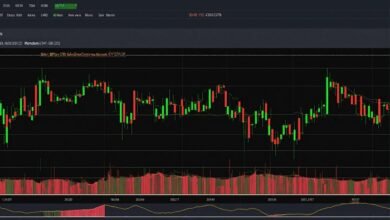How to Invest in Bonds: A Comprehensive Guide for Beginners

Introduction
Investing in bonds is a reliable way to diversify your investment portfolio, offering stability and predictable returns. This guide will walk you through everything you need to know about how to invest in bonds, from understanding what bonds are to exploring different types and strategies. Whether you’re a novice investor or looking to expand your knowledge, this comprehensive guide is for you.
What Are Bonds?
Bonds are debt securities issued by corporations, municipalities, or governments to raise capital. When you invest in bonds, you are essentially lending money to the issuer in exchange for periodic interest payments and the return of the bond’s face value at maturity. Understanding how to invest in bonds starts with knowing the basic structure of bonds, including terms like face value, coupon rate, and maturity date.
Types of Bonds
Before you decide how to invest in bonds, it’s essential to know the various types available. Government bonds, corporate bonds, municipal bonds, and zero-coupon bonds each have unique characteristics and risk levels. Government bonds, such as U.S. Treasury bonds, are considered the safest, while corporate bonds can offer higher yields but come with higher risk. Municipal bonds are tax-exempt, making them attractive for certain investors.
Benefits of Investing in Bonds
Learning how to invest in bonds involves understanding the benefits they offer. Bonds can provide a steady income stream through interest payments, which is particularly appealing for retirees. Additionally, bonds are generally less volatile than stocks, making them a safer investment. Diversifying your portfolio with bonds can also protect against market downturns and balance your investment strategy.
Risks Associated with Bonds
No investment is without risk, and knowing how to invest in bonds means recognizing these risks. Interest rate risk, credit risk, and inflation risk are the primary concerns for bond investors. Interest rate risk affects bond prices inversely; when rates rise, bond prices fall. Credit risk is the possibility that the bond issuer may default on interest payments. Inflation risk occurs when the return on bonds fails to keep up with inflation, reducing purchasing power.
How to Buy Bonds
Understanding how to invest in bonds includes knowing where and how to buy them. Bonds can be purchased through brokerage firms, directly from the government, or via bond funds. Brokerage firms offer a wide range of bonds, while government bonds can be bought through TreasuryDirect. Bond funds pool money from multiple investors to buy a diversified portfolio of bonds, providing instant diversification.
Evaluating Bond Investments
When learning how to invest in bonds, evaluating potential investments is crucial. Key factors include the bond’s credit rating, yield, and maturity. Credit ratings, provided by agencies like Moody’s and Standard & Poor’s, assess the issuer’s creditworthiness. The yield, or return on investment, should be compared to similar bonds. Lastly, consider the bond’s maturity date, as longer-term bonds may offer higher yields but come with greater interest rate risk.
Bond Investment Strategies
Developing a strategy is a vital part of understanding how to invest in bonds. Laddering, barbell, and bullet strategies are popular among bond investors. Laddering involves buying bonds with different maturities to spread risk and maintain liquidity. The barbell strategy combines short-term and long-term bonds to balance risk and return. The bullet strategy focuses on bonds maturing at the same time, which can be useful for meeting specific financial goals.
Tax Considerations for Bond Investors
Knowing how to invest in bonds also involves understanding the tax implications. Interest from government bonds may be tax-exempt at the state and local levels, while municipal bond interest is often exempt from federal taxes. However, corporate bond interest is fully taxable. Consider the tax impact on your overall investment returns and consult with a tax advisor if necessary.
Impact of Economic Factors on Bonds
Economic conditions significantly influence bond markets, and being aware of these factors is part of learning how to invest in bonds. Inflation, interest rates, and economic growth can all affect bond prices and yields. For instance, rising inflation erodes the purchasing power of fixed interest payments, while economic growth can lead to higher interest rates, impacting bond prices negatively.
Diversifying with Bonds
A key aspect of knowing how to invest in bonds is using them to diversify your investment portfolio. Bonds can act as a counterbalance to stocks, reducing overall portfolio risk. By including a mix of bond types and maturities, you can achieve a diversified portfolio that provides income, preserves capital, and reduces volatility.
Conclusion
Understanding how to invest in bonds is essential for building a balanced and resilient investment portfolio. Bonds offer predictable returns and lower risk compared to stocks, making them a valuable component of any investment strategy. By learning about different types of bonds, their benefits and risks, and effective investment strategies, you can make informed decisions that align with your financial goals. Start with a clear investment plan, consider your risk tolerance, and diversify your portfolio to enjoy the benefits of bond investing.
FAQs
1. What is the minimum amount needed to invest in bonds?
The minimum amount needed to invest in bonds varies. U.S. Treasury bonds can be purchased for as little as $100, while corporate bonds might require a minimum investment of $1,000.
2. How are bond prices affected by interest rates?
Bond prices and interest rates have an inverse relationship. When interest rates rise, bond prices fall, and vice versa. This is due to the fixed interest payments of bonds becoming more or less attractive compared to new bonds issued at current rates.
3. What are the safest types of bonds to invest in?
Government bonds, particularly U.S. Treasury bonds, are considered the safest due to their backing by the federal government. Municipal bonds are also relatively safe, especially those issued by financially stable municipalities.
4. Can you lose money investing in bonds?
Yes, it is possible to lose money investing in bonds, especially if the issuer defaults or if you sell the bond before maturity at a lower price than you paid. Interest rate fluctuations and inflation can also impact bond investment returns.
5. Are bond funds a good investment?
Bond funds can be a good investment for those seeking diversification and professional management. They pool money from many investors to buy a variety of bonds, spreading risk and potentially offering more consistent returns than individual bonds.





